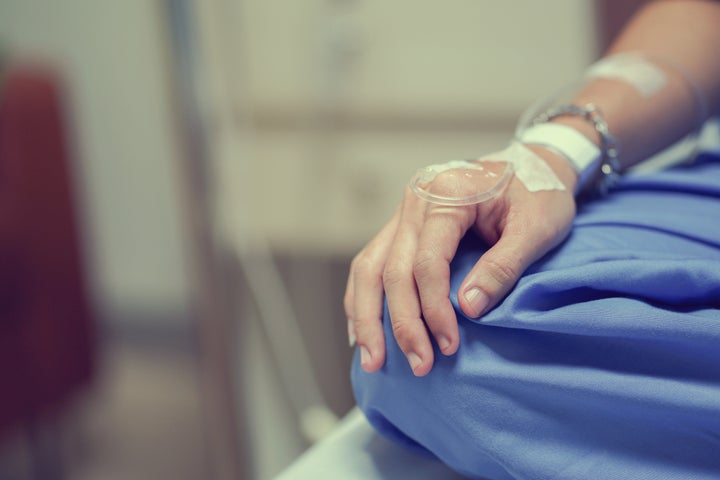While much of the country is trying to stay home during the coronavirus pandemic, it’s not always an option for medical care. Chemotherapy can’t be administered via webcam. Dermatologists can’t screen for skin cancer from afar. And emergency surgery can’t wait for the crisis to subside.
Health care providers have had to quickly adapt to find ways to provide care for urgent matters other than COVID-19, the disease caused by the coronavirus, while also keeping their patients safe.
Sometimes this means asking patients to stay in their cars until it’s time for their appointment. Other times it means staggering appointments, changing the number of health care providers involved in treating a patient, or making carefully weighed decisions regarding what care is absolutely necessary. Given that research shows people with mild or no symptoms may be playing a large role in spreading the coronavirus, health care providers are making sure to put precautions in place even when a patient isn’t showing symptoms, particularly when they’re surrounded by other people who are vulnerable to the virus.
For Los Angeles-based oncologist Dr. Joshua Mansour, in-person care is necessary for much of the care he provides, such as ongoing chemotherapy, urgent or emergency procedures, evaluating worsening symptoms and assessing other health care issues that are new or acute or that require a physical exam.
But since many of his patients are immunocompromised, and therefore at greater risk of COVID-19, extra precautions are necessary.
“The big issue now is just weighing out the risk of being around sick patients that may potentially have been exposed to the virus versus what is safe for the person to begin with,” Mansour said. “So that’s kind of just what we’re doing. We’re not trying to stop patients from being seen or stop people from going to the ER, just want to take additional precautions.”

This means physicians are wearing masks and gloves when interacting with these more vulnerable patients, patients are wearing masks, and 6 feet of space is maintained between the patient and provider unless a physical exam is necessary. Mansour said he has also been rearranging care plans when appropriate to help prevent putting patients at risk.
“If a patient’s doing well on some therapy, we might delay an additional type of therapy that we would normally do because of COVID-19,” Mansour said.
Telemedicine often isn’t sufficient in areas of medicine that require equipment to assess or treat patients, Dr. Yuna Rapoport, an ophthalmologist at Mount Sinai St. Luke’s Hospital in New York City, said. Much of Rapoport’s work as an opthamologist requires an instrument called a slit lamp, which is used to get a closer look at various parts of the eye during an eye exam. Using a slit lamp and other manual procedures allow her to see different layers of a patient’s cornea and detect abrasion, for example. These are important aspects of care that she said wouldn’t be possible through telemedicine.
Rapoport said she’s postponing some appointments and using telemedicine when appropriate. But when office visits are necessary, she takes many safety precautions such as attaching a breath shield to the slit lamp for extra protection when performing eye exams, as recommended by the American Academy of Ophthalmology.
Rapoport is also asking patients not to bring friends or family members to their appointments “just to have as few patients in the mix as possible at one time,” she said. This is a common approach now in many health care settings, including new restrictions in some New York City hospitals that prohibit pregnant people from having any visitors — even a partner or doula — during childbirth.
To limit interaction among patients and health care workers in the waiting room, Connecticut dermatologist Dr. Kim Eickhorst asks patients to wait in their cars after check-in until they receive a call or text letting them know it’s time to enter the office for their appointment. She also discourages patients’ companions from joining them for their appointments and requires employees to have their temperature taken before coming into the office each day.
“While telemedicine offers the advantage of no face-to-face interaction, that in itself is a disadvantage to the dermatologist,” Eickhorst said. “Feeling, seeing and palpating the skin, in addition to a thorough history, are the most important tools a dermatologist can put to use in arriving at a correct diagnosis.”
Eickhorst’s office is using telemedicine for nonemergency appointments, but in-person care is still necessary in many cases, such as some surgical treatments for skin cancer. But her office is also taking special precautions, such as having patients remain in one room for the duration of their stay, staggering appointments to allow for less patient overlap in the building, allotting extra time between visits to sanitize exam rooms and organizing treatment teams so that patients are treated only by Eickhorst and one nurse.
Similarly, Dr. Rafael Lugo, a Texas-based general surgeon, said he’s using telemedicine to assess many patients — sometimes eliminating the need for patients to visit the emergency room — and also to streamline care. But in many cases, in-person care is crucial.
His practice is trying to minimize the risk of COVID-19 transmission by thoroughly screening patients to see if they potentially have COVID-19 symptoms and requiring patients who likely have the coronavirus to wear masks. During patient intubation — a procedure in which a breathing tube is inserted before surgery — the only people allowed in the operating room are anesthesiologists in order to protect others from coming into contact with any virus particles that may be in the air.
“It’s a learning process in some ways,” Lugo said. “But we have the advantage that due to tremendous social media communication and other channels, doctors and nurses are learning from the experiences of others in other parts of the world or in places that the curve already has reached a high number.”
A HuffPost Guide To Coronavirus
- Stay up to date with our live blog as we cover the COVID-19 pandemic
- Why Trump is wrong to compare coronavirus to the flu
- How to file for unemployment if you’ve been laid off
- Got anxiety? Here are 6 cheap mental health resources.
- What to do if you live with someone with COVID-19
- 12 Zoom hacks for work meetings and virtual happy hours
- How to get the most out of the weekend despite coronavirus
- The HuffPost guide to working from home
- What coronavirus questions are on your mind right now? We want to help you find answers.

